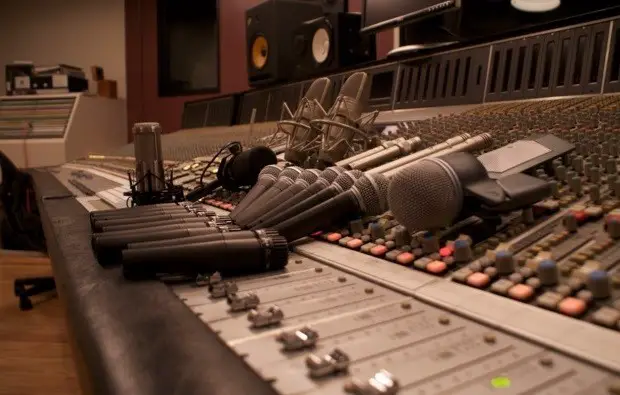
Recording Microphone Reviews: Read about the best microphones for your studio.
Introduction
Lot of artists, musicians and home recording enthusiasts want to know what type of microphone is best for recording purposes. While there’s no single mic that will meet all your recording needs, there are some smart choices out there for recording instruments and vocals.
- Dynamic microphones are the most effective when recording relatively loud sound sources that do not contain a lot of very high-frequency details. So that includes most live sound situations, and in studios where you wish to record instruments such as drums, electric guitars, and basses. These are relatively inexpensive, durable, and don’t need a separate power supply or battery to operate them.
- Condenser mics (aka Capacitors) are comparatively more expensive, are more sensitive, and capture high-frequency details more accurately. These mics usually produce a small electrical signal, which needs to be amplified further before they can be used. Capacitors are mostly used in recording studios (where there is less noise), as opposed to live concerts.
Read: Complete Guide on Recording Microphones
Lot of new Microphones get introduced in the market all the time; after all ‘recording’ is big business and its an important component of any recording studio.
So finding a good set of mics for your studio can be time-consuming, a better approach to buy mics would be to just focus on a small group of ‘go to’ mics (that the majority uses and have been around for some time).
Obviously, this doesn’t mean that the new ones are bad, but some products are like ever-green products – tried & tested, and most professional prefer using these.
These mics can handle a wide range of recording needs, without breaking the bank or compromising on the quality, and have been around for some time.
Among this select group of vintage recording microphones, here are my favorites: Shure SM58, Shure SM57, Sennheiser MD421, Rode NT1/Rode N2.
The best value-for-money (if money is tight) are the SM58 & the SM57. Both have similar electronics (with some minor frequency differences), the SM58 being better for vocals, it also has a built-in pop filter under the grill (something that the 57 doesn’t have). These are solidly build, are good quality and will hold their value.
There are some artists who also use a Tube microphone to make their recordings sound a bit different. However, that is more about experimenting and you could also do that provided you have the required experience and the budget.
Best Recording Microphones
Shure SM58
Built like a tank, the SM58 is the most popular dynamic mic to go to. It producers a good clean sound and it works great both on stage and in a studio environment.
The SM58 is known for being used for recording drum kits but to be honest it can handle any recording task: guitar, vocals, snares (and other drums), piano, flutes you name it, it records it.
Alternatives – SM57, Audix i5, Beyer M88
The Sennheiser MD421
The Sennheiser MD-421 has a nice 5 position freq control switch and is used in almost all the recording studios, especially for mic’ing bass drums and tom toms.
Great Alternatives – Shure SM58, Audix i5 and the SM57
AKG D112 Aka The Egg
The AKG D112 is the go to mic for mic’ing kick drums as well as upright basses. If you can find the older D12 go for it (it’s the better of the 2) but if you can’t then go ahead and get the D112. Both mics will get the job well.
Alternatives – Audix D4, Audix D6
Rode NT1/NT1A
These mics go a long way back, and years back it used to be sky/baby blue, and every local studio had it in their arsenal. This mic is now discontinued but is always brought back in an anniversary package of some sort.
What makes the NT1A great is it’s warmth and texture on vocals which competes with mics in a higher price range (such as the Neumanns, not 100% of course but close enough).
The newer version of this mic is the NT2-A which includes the same warmth and characteristics but with a few more features such as: Multiple polar patterns (Omni, cardioid, figure 8), High pass filter (40hz or 80hz) as well as pad (0, -5 or -10db).
Alternatives – Shure KSM27
Also Read: Retro, Vintage style (design) Microphones
Here are some more Older Recording Mics Worth Going After…
The ‘Salt Shaker’ Altec 633a
This mic was prominent in the 40’s and 50’s good for vocals but works much better on kick and snare drums as well as guitars.
Electro Voice 666
Rock solid casing, this one gets used for drums, bass, piano, vocals, trumpets, anything! It’s a perfect all around mic to have in the studio.
AKG D19
This vintage mic gained it’s claim to fame furring the 1960’s when The Beatles Engineer Geoff Emerick used it for the Pepper’s Sessions. It’s really good for vocals (has a British sound). This was the go to mic for groups such as The Beatles and Artists like Jimmy Hendrix.
Electra-Voice RE20
Built like a tank and versatile to a fault, the professional quality EV RE20 has been a mainstay in studios (as well as broadcast facilities) for well over 35 years.
Great on low-frequency instruments such as bass cabs and kick drum, the RE20 also excels as a tom mic and can also be used for recording electric guitar. It includes a bass roll-off switch.
Alternatives: EV RE11, Sennheiser MD421, Shure SM57
Lot of new Microphones get introduced in the market all the time; after all ‘recording’ is big business and its an important component of any recording studio.
So finding a good set of mics for your studio can be time-consuming, a better approach to buy mics would be to just focus on a small group of ‘go to’ mics (that the majority uses and have been around for some time).
Obviously, this doesn’t mean that the new ones are bad, but some products are like ever-green products – tried & tested, and most professional prefer using these.
These mics can handle a wide range of recording needs, without breaking the bank or compromising on the quality, and have been around for some time.
Among this select group of vintage recording microphones, here are my favorites: Shure SM58, Shure SM57, Sennheiser MD421, Rode NT1/Rode N2.
The good thing about these mics is that you may also be able to find them ‘used’, if budget is a constraint or if you come across one that is maintained well. These are robust, made with really solid casings, and are built to last. If you come across a used mic (like the SM57 or SM58), that looks okay & works well, by all means go for it.
In terms of price, the Shure ones are cheaper (around 100 bucks), whereas the other models are in excess of couple of hundred dollars!
Shure SM58
Built like a tank, the SM58 is the most popular dynamic mic to go to. It producers a good clean sound and it works great both on stage and in a studio environment.
The SM58 is known for being used for recording drum kits but to be honest it can handle any recording task: guitar, vocals, snares (and other drums), piano, flutes you name it, it records it.
Alternatives – SM57, Audix i5, Beyer M88
The Sennheiser MD421
The Sennheiser MD-421 has a nice 5 position freq control switch and is used in almost all the recording studios, especially for mic’ing bass drums and tom toms.
Great Alternatives – Shure SM58, Audix i5 and the SM57
AKG D112 Aka The Egg
The AKG D112 is the go to mic for mic’ing kick drums as well as upright basses. If you can find the older D12 go for it (it’s the better of the 2) but if you can’t then go ahead and get the D112. Both mics will get the job well.
Alternatives – Audix D4, Audix D6
Rode NT1/NT1A
These mics go a long way back, and years back it used to be sky/baby blue, and every local studio had it in their arsenal. This mic is now discontinued but is always brought back in an anniversary package of some sort.
What makes the NT1A great is it’s warmth and texture on vocals which competes with mics in a higher price range (such as the Neumanns, not 100% of course but close enough).
The newer version of this mic is the NT2-A which includes the same warmth and characteristics but with a few more features such as: Multiple polar patterns (Omni, cardioid, figure 8), High pass filter (40hz or 80hz) as well as pad (0, -5 or -10db).
Alternatives – Shure KSM27
Also Read: Retro, Vintage style (design) Microphones
Here are some more Older Recording Mics Worth Going After…
The ‘Salt Shaker’ Altec 633a
This mic was prominent in the 40’s and 50’s good for vocals but works much better on kick and snare drums as well as guitars.
Electro Voice 666
Rock solid casing, this one gets used for drums, bass, piano, vocals, trumpets, anything! It’s a perfect all around mic to have in the studio.
AKG D19
This vintage mic gained it’s claim to fame furring the 1960’s when The Beatles Engineer Geoff Emerick used it for the Pepper’s Sessions. It’s really good for vocals (has a British sound). This was the go to mic for groups such as The Beatles and Artists like Jimmy Hendrix.
Electra-Voice RE20
Built like a tank and versatile to a fault, the professional quality EV RE20 has been a mainstay in studios (as well as broadcast facilities) for well over 35 years.
Great on low-frequency instruments such as bass cabs and kick drum, the RE20 also excels as a tom mic and can also be used for recording electric guitar. It includes a bass roll-off switch.
Alternatives: EV RE11, Sennheiser MD421, Shure SM57
Microphone Accessories
Nady MPF-6 Microphone Pop Filter
Nady MPF-6 is a pop filter for vocal microphones, comes with boom and microphone stand clamp, the the Swivel mount makes it easy to position as per your requirements.
MS7701 Tripod Boom Microphone Stand
Euro-Style boom with separate clutches for length and angle of boom, comes with clip-on cable holder. Allows user to make one-handed adjustments of boom angle while performing. Height can be adjusted from 36 to 63 inches.
Foam Ball-Type Mic Windscreen
Get the best vocal recordings, as this protects your mics against wind interference and singers’ spit. These colorful foam windscreens fit most mics and are designed for normal sized handheld mics. Not designed for use with headset microphones.
Mic Cable Patch Cords – XLR Male to XLR Female
GLS Audio 25 feet Mic Cable Patch Cords – XLR Male to XLR Female Black Microphone Cable. Heavy Duty Flexible Rubber Jacket, True Balanced Lo-Z Shielded Cable, High Grade 21g Dual Copper Conductors & Shield, Tri-GripTM & Rubber Booty Strain Relief, High Quality Noise Free Performance.
Behringer XM8500 Dynamic Cardioid Microphone
Dynamic vocal microphone with smooth mid-frequency presence rise for excellent voice projection, Ultra-wide frequency response for a brilliant and transparent sound, Extremely high signal output lets your voice cut through, Cardioid characteristic minimizes background noise and feedback, Shock mount system to cut down handling noise.
Shure SM57-LC Cardioid Dynamic Microphone
Contoured frequency response is clean, instrumental reproduction and rich vocal pickup, Professional-quality reproduction for drum, precussion, and instrument amplifier miking, Uniform cardioid pickup pattern isolates the main source while reducing background noise, Extremely durable under heaviest use, frequency response 40 to 15,000 Hz.
Dynamic Karaoke Microphone with 10-foot Cord
Singing Machine SMM-205 Dynamic Karaoke Microphone with 10-foot Cord. Uni-directional Dynamic Microphone, Wide Frequency Response & High Sensitivity, Karaoke Accessory, No Batteries required.
Spider Mount for Condenser Mics
Spider Mount for Samson’s C01 condenser mic, Spider shockmount, Isolates mic from physical vibration, floor, and stand noise, The art of high technology is best served by making excellence more accessible to everyone, Also available for Samson’s C03, CL7, CL8 and C01U condenser mics.
Microphone Clip
On Stage MY250 Shure Type Microphone Clip, Break-resistant, Swivel adapter, Soft cradle.
Microphone Pop Filters
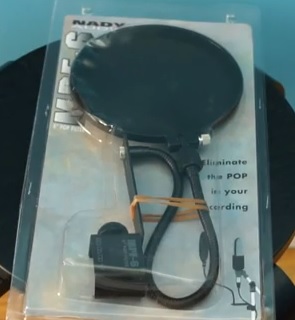 Pop filters help you get clear and smooth vocal recordings. A pop filter is placed between the singer and the microphone to prevent high pressure sound waves (to deal with the Plosives) from hitting the mic capsule and causing unwanted signal clipping.
Pop filters help you get clear and smooth vocal recordings. A pop filter is placed between the singer and the microphone to prevent high pressure sound waves (to deal with the Plosives) from hitting the mic capsule and causing unwanted signal clipping.
Stedman Proscreen XL
Stedman Corporation Proscreen XL is a metal screen pop filter that is more durable and easier to clean (compared to the cheaper “panty-hose” screen available from the same company).
Unlike other pop filters, Proscreen XL uses a different approach to deal with popping. Rather than simply blocking plosive sounds, the Proscreen XL uses angled slots in the filter to redirect the energy downwards, away from you microphone.
I would personally recommend this model for typical home studios, as it provides an ideal mix of quality and affordability.
Nady MPF-6 Clamp On Microphone Pop Filter
 Want a good Pop Filter for you mic to getting a better sound? The Nady MPF-6 Clamp On Microphone Pop filter voice It works very well for attenuating the sharper “P”, “T”, and “S” sounds that cause spikes when doing voice-overs. If you are serious about music, and have a decent recording setup with a mic, you definitely need to include this as part of that setup.
Want a good Pop Filter for you mic to getting a better sound? The Nady MPF-6 Clamp On Microphone Pop filter voice It works very well for attenuating the sharper “P”, “T”, and “S” sounds that cause spikes when doing voice-overs. If you are serious about music, and have a decent recording setup with a mic, you definitely need to include this as part of that setup.
KeytarHQ editorial team includes musicians who write and review products for pianists, keyboardists, guitarists & other musicians. KeytarHQ is the best online resource for information on keyboards, pianos, synths, keytars, guitars and music gear for musicians of all abilities, ages and interests.
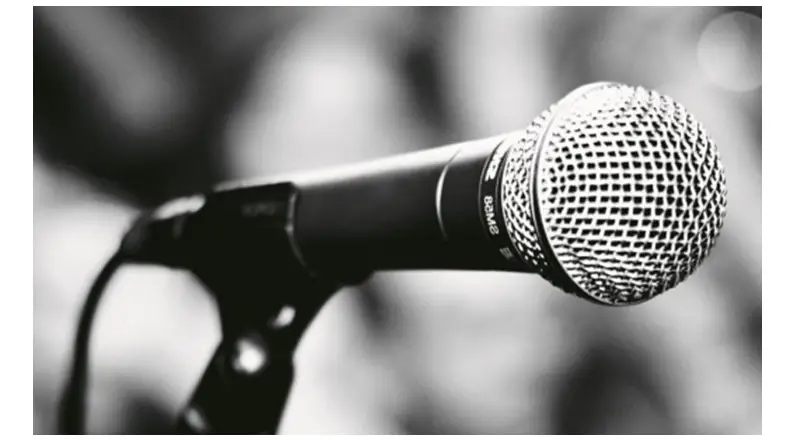
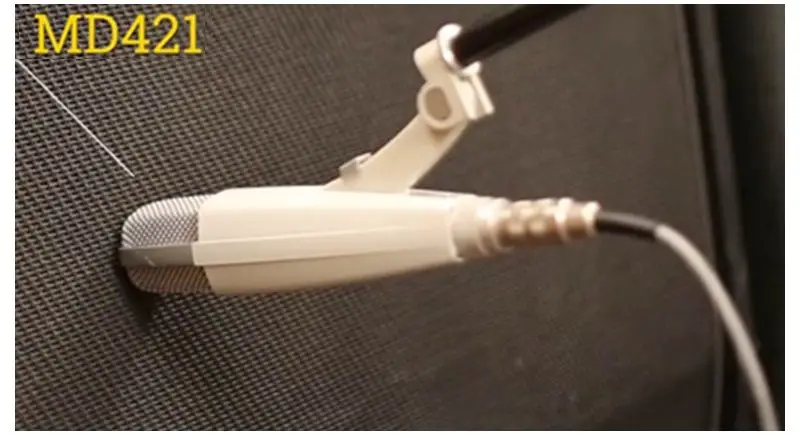
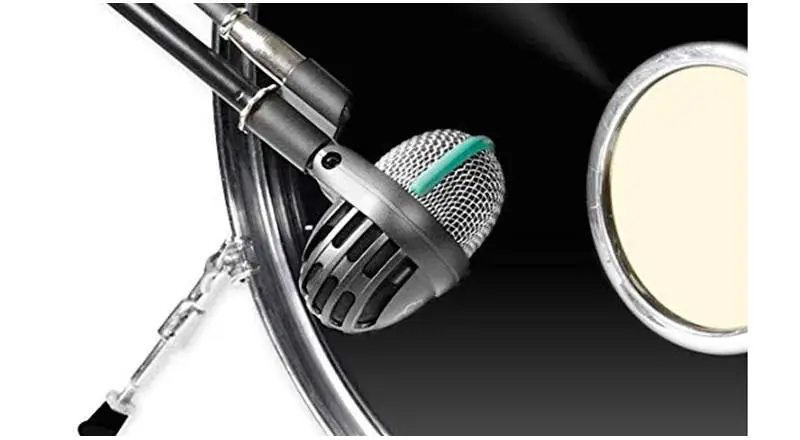
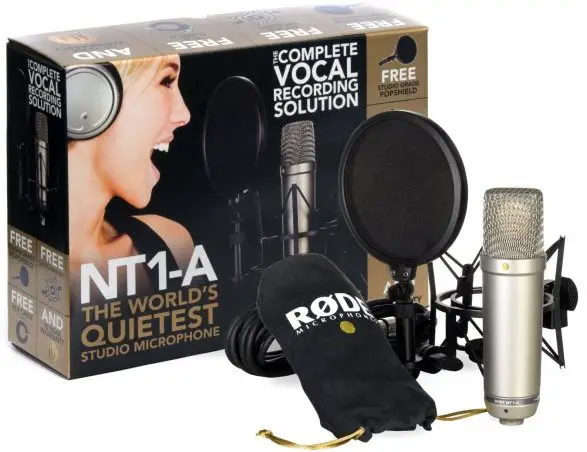



Leave a Reply